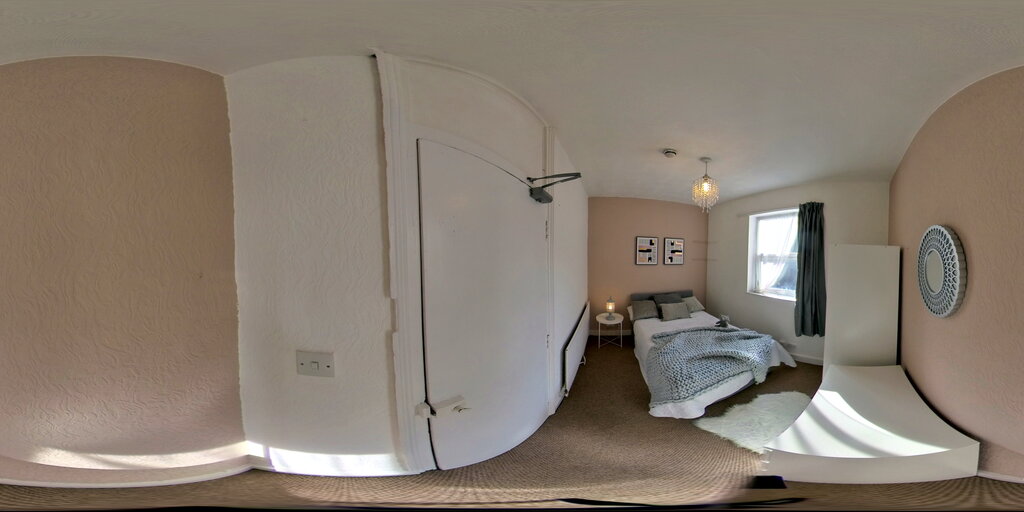What is virtual reality and how does it work?
Virtual reality (VR) is a cutting-edge technology that is revolutionizing the real estate industry. It allows potential buyers to experience properties without physically being there. VR works by immersing users in a simulated environment through the use of a headset. These headsets have built-in screens that display a 360-degree view of the property, creating a sense of presence and depth. The user can navigate through the space and explore different rooms, giving them a realistic and immersive experience. This technology not only saves time and money for both buyers and sellers but also opens up new possibilities for showcasing properties in a dynamic and interactive way.

The impact of virtual reality on the real estate industry
Virtual reality (VR) has revolutionized the real estate industry, offering a game-changing experience for both buyers and sellers. With VR tours, potential buyers can explore properties from the comfort of their own homes, saving time and effort. These immersive experiences provide a realistic and interactive view of the property, allowing buyers to visualize themselves living in the space. Additionally, VR tours enable real estate agents to showcase properties to a wider audience, including international buyers, without the need for physical visits. This technology has transformed the way properties are marketed and has significantly increased efficiency in the buying and selling process. As VR continues to advance, we can expect to see even more innovative applications in the real estate industry, further enhancing the overall experience for all parties involved.
Benefits of virtual reality tours for buyers
Virtual reality tours offer numerous benefits for buyers in the real estate market. Unlike traditional methods of viewing properties, virtual reality tours allow buyers to explore homes and spaces from the comfort of their own homes. This technology provides a realistic and immersive experience, giving buyers a better understanding of the property’s layout, size, and overall ambiance. Virtual reality tours also save both buyers and real estate agents time and effort, as they eliminate the need for physical visits to multiple properties. Additionally, virtual reality tours are particularly beneficial for long-distance buyers, as they can easily explore properties in different cities or even countries without the need for travel. Overall, virtual reality tours revolutionize the real estate industry by providing a convenient, efficient, and engaging way for buyers to find their dream homes.
How virtual reality tours save time and money for real estate agents
Virtual reality tours have revolutionized the real estate industry by saving both time and money for agents. With virtual reality technology, agents can provide immersive and realistic tours of properties without the need for physically visiting each one. This means that agents can show multiple properties to potential buyers in a single day, significantly reducing the time and effort involved in traditional property viewings. Additionally, virtual reality tours eliminate the need for expensive staging and photography, allowing agents to showcase properties in their best light without the added cost. By embracing virtual reality tours, real estate agents can streamline their processes, attract more clients, and ultimately close deals more efficiently.
The role of virtual reality in marketing real estate properties
Virtual reality (VR) has revolutionized the way real estate properties are marketed. With VR tours, potential buyers can now immerse themselves in a virtual world and explore properties from the comfort of their own homes. This technology allows for a more interactive and engaging experience, providing a sense of presence and scale that traditional photographs and videos cannot match. VR tours also save time and resources for both buyers and sellers, as they eliminate the need for physical visits to multiple properties. Furthermore, VR can showcase properties that are still under construction or located in distant locations, expanding the reach of real estate marketing. As the technology continues to advance, virtual reality is set to become an integral part of the real estate industry, enhancing the way properties are marketed and ultimately transforming the future of real estate.
How virtual reality tours improve the buying experience for clients
Virtual reality (VR) tours are revolutionizing the real estate industry by enhancing the buying experience for clients. With VR, potential buyers can now explore properties from the comfort of their own homes, saving time and eliminating the need for physical visits. These immersive tours provide a realistic and interactive experience, allowing clients to navigate through every room and examine details with a 360-degree view. By offering virtual reality tours, real estate agents can attract a broader audience, including international buyers, and provide a more convenient and efficient way to showcase properties. This innovative technology not only improves the buying experience but also increases transparency and trust between agents and clients.
Overcoming challenges and limitations of virtual reality in real estate
Overcoming challenges and limitations of virtual reality in real estate is key to shaping the future of the industry. While virtual reality tours offer a unique and immersive experience for potential buyers, there are certain obstacles that need to be addressed. One challenge is the need for high-quality and realistic 3D models of properties, as this directly impacts the level of immersion and engagement. Additionally, ensuring compatibility across various VR devices and platforms is crucial in reaching a wider audience. Moreover, addressing concerns related to motion sickness and discomfort during virtual tours is essential for creating a seamless and enjoyable experience. By continuously improving and innovating in these areas, virtual reality has the potential to revolutionize the way real estate is bought and sold, providing convenience and accessibility to buyers worldwide.
The future potential of virtual reality in real estate
The future potential of virtual reality in real estate is immense. Virtual reality tours offer a unique and immersive experience for potential buyers, allowing them to explore properties without leaving their homes. This technology provides a realistic representation of the space, enabling buyers to visualize themselves living in the property and make more informed decisions. Additionally, virtual reality tours can save time and money for both buyers and sellers, as they eliminate the need for physical visits and allow for virtual staging. As virtual reality technology continues to advance, we can expect to see even more innovative applications in the real estate industry, revolutionizing the way properties are marketed and sold.
Examples of successful virtual reality tours in the real estate industry
Virtual reality tours have revolutionized the way potential buyers view and experience properties in the real estate industry. Successful examples of these tours include immersive 3D walk-throughs that allow users to explore every corner of a property from the comfort of their own homes. With virtual reality, potential buyers can visualize the layout and flow of a space, giving them a realistic sense of the property before even stepping foot inside. This technology has proven to be a game-changer, especially in the luxury real estate market, where buyers are often located in different parts of the world. By providing a truly immersive and interactive experience, virtual reality tours have become a powerful tool for real estate agents to showcase properties and attract buyers.
Conclusion: The growing importance of virtual reality tours in the future of real estate
Virtual reality tours are becoming increasingly important in the future of real estate. As technology continues to advance, potential buyers are demanding more immersive and interactive experiences when searching for their dream home. Virtual reality tours allow buyers to explore properties from the comfort of their own homes, saving time and eliminating the need for in-person visits. Additionally, these tours provide a realistic and accurate representation of the property, allowing buyers to visualize themselves living in the space. With the ability to customize and personalize virtual reality tours, real estate agents can cater to individual preferences and showcase the unique features of each property. In this digital age, virtual reality tours are revolutionizing the way we buy and sell real estate, making the process more efficient and enjoyable for both buyers and sellers.
